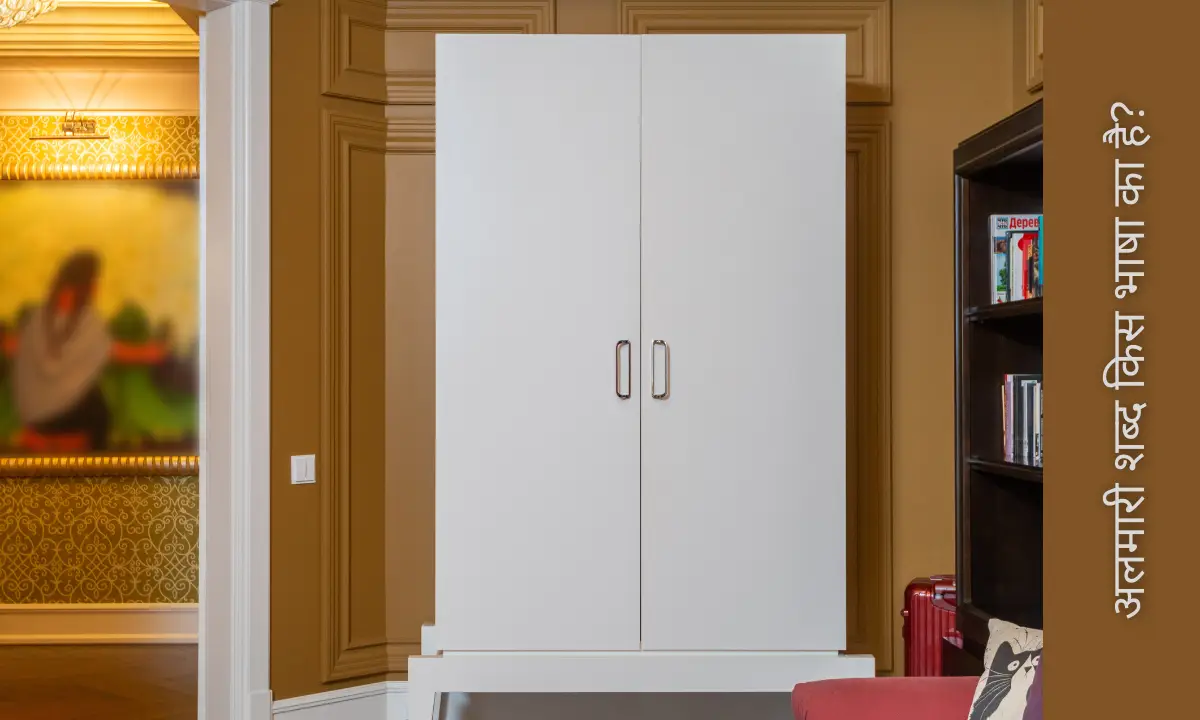In almost every Indian household, you’ll find an “अलमारी” filled with essentials—clothes, books, old photographs, or even cherished letters. It’s not just a piece of furniture; it’s a place that holds memories, a silent keeper of everything precious. But have you ever wondered, अलमारी किस भाषा का शब्द है? It’s fascinating to realize that many words we use daily in Hindi actually come from different languages, and “अलमारी” is one of them. This article will take you through the journey of this word, exploring its origins and why it has become such a big part of our lives.
Historical Background of the Word “अलमारी”
अलमारी शब्द किस भाषा से आया है?
The word “अलमारी” originates from the Portuguese term “almario,” introduced during Portuguese colonial influence in India. Over time, “almario” was adapted into Hindi as “अलमारी,” referring to a storage cabinet or wardrobe commonly found in Indian households.
To answer the question, अलमारी शब्द किस भाषा से आया है? let’s take a trip back in time. The word “अलमारी” actually has its roots in the Portuguese language, where it’s called “almario.” When the Portuguese came to India for trade and exploration, they brought not only their goods but also their language. Just like trade items, words started to exchange hands, becoming woven into the everyday vocabulary of people in India.
Portuguese influence is present in many Hindi words we use today. “अलमारी” is just one of the many examples; words like “साबुन” (from the Portuguese word “sabão” for soap), “तौलिया” (from “toalha” for towel), and even “पैजामा” (from “pijama”) have similar origins. Over time, these foreign words were adapted to fit the needs and sounds of Hindi, creating a blend of cultures that we rarely think about when we speak.
Also Read: Biped Slang Meaning: Understanding the Evolution and Use of “Biped” in Modern Slang.

The Evolution of Meaning and Usage
Originally, in Portuguese, the word “almario” was used to describe a cabinet or a place to store sacred items, but as it entered the Hindi language, “अलमारी” took on a more practical meaning. In India, it became a commonly used term for any cupboard or wardrobe where people store everyday essentials like clothes, utensils, or important documents. Over the years, the word “अलमारी” became deeply embedded in the Indian household vocabulary.
Today, “अलमारी” is more than just a storage unit; it’s a symbol of organization and security within the home. It’s where families keep cherished items and valuable possessions, sometimes even hidden treasures from previous generations. This evolution from a simple cabinet to a beloved household staple reflects how the term “अलमारी” has found a unique place in our lives, bridging practicality with sentimentality.
Cultural and Literary Significance
The word “अलमारी” holds a special place not only in our homes but also in our hearts. In Indian culture, an अलमारी isn’t just about storing things—it’s about preserving memories. It’s a familiar piece of furniture, often passed down from generation to generation, filled with sentimental items like old letters, faded photos, or a grandparent’s belongings. For many, opening an अलमारी feels like opening a small time capsule of family history.
In Hindi literature and poetry, the word “अलमारी” has often been used to convey nostalgia and memory. For instance, in one of मुनव्वर राना’s famous couplets, the अलमारी becomes a keeper of old love letters and forgotten trinkets:
“अलमारी से ख़त उसके पुराने निकल आए,
फिर से मिरे चेहरे पे ये दाने निकल आए।”
This imagery of the अलमारी filled with memories is something many of us relate to, as it beautifully represents the deep emotional value it holds in our lives.
Also read: Historical Temples in India: A Journey Through Time and Spirituality.
The Broader Linguistic Impact
The story of the word “अलमारी” is more than just an interesting piece of trivia; it’s a testament to how languages evolve and influence each other. Words like “अलमारी” remind us of a time when cultures met, exchanged, and left a lasting impact. Language is a bridge that connects us across centuries and continents, blending influences into something unique.
When we use a word like “अलमारी,” we’re unknowingly celebrating this blend of cultures and linguistic exchange. Many of the foreign-origin words in Hindi have adapted not only in pronunciation but also in meaning, giving them a local flavor that makes them feel like they’ve always been part of the language. This transformation shows the adaptability of Hindi, making it a language that grows and changes while preserving its history.
Conclusion
So, अलमारी किस भाषा का शब्द है? The answer is Portuguese, but its journey is uniquely Indian. From “almario” to “अलमारी,” this word has traveled across continents, adapted to new meanings, and found a permanent home in our daily vocabulary. It’s more than just a borrowed term; it’s a symbol of the rich cultural exchanges that have shaped our language and, ultimately, our lives.
Next time you open your अलमारी, remember that it’s not just a storage space but a piece of history and a reminder of how languages and cultures blend together. Words like “अलमारी” remind us to cherish the diversity of our language and to appreciate the unexpected ways history is preserved in the words we use every day.
Frequently Asked Questions (FAQ) about ‘अलमारी’
“अलमारी” शब्द पुर्तगाली भाषा से आया है, जहाँ इसे “almario” कहा जाता है। यह शब्द हिंदी में समाहित होकर कपड़े, बर्तन, या अन्य वस्तुएं रखने के लिए उपयोग होने वाले फर्नीचर को दर्शाता है।
अंग्रेजी में “अलमारी” को “cupboard,” “cabinet,” या “wardrobe” कहा जाता है, जो वस्त्र या अन्य सामान रखने के लिए उपयोग किए जाते हैं।
“अलमारी” का बहुवचन “अलमारियाँ” होता है, जो एक से अधिक अलमारियों को दर्शाता है।
“अलमारी” शब्द का उपयोग मुख्यतः हिंदी और कुछ अन्य भारतीय भाषाओं में होता है। हालांकि, इसके मूल पुर्तगाली शब्द “almario” का उपयोग पुर्तगाली भाषा में किया जाता है।
